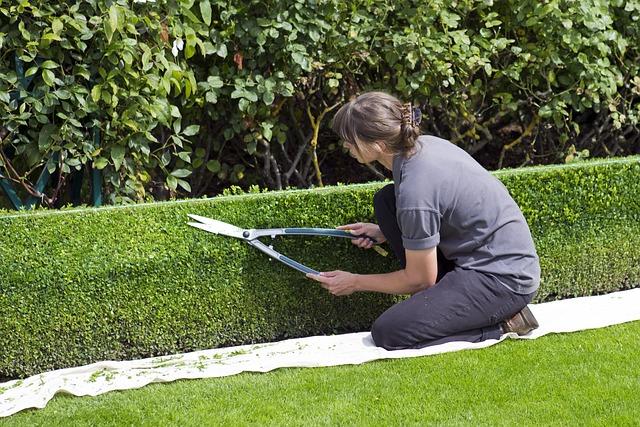Trimming your dog’s hair can be a rewarding experience that not only helps keep your furry friend looking their best but also promotes their overall health and comfort. Whether you’re a seasoned pet owner or new to grooming, understanding the do’s and don’ts of this essential task can make all the difference. In this guide, we’ll walk you through the key principles of dog hair trimming, offering practical tips and gentle reminders to ensure a stress-free experience for both you and your pet. With a little patience and the right approach, you’ll soon find that grooming time is not just a chore, but an opportunity to strengthen the bond with your four-legged companion. Let’s explore how to make this routine an enjoyable part of your shared journey.
Choosing the Right Tools for Your Furry Friend
When it comes to grooming your dog at home, having the right tools can make a world of difference. Investing in quality grooming tools not only ensures a smoother experience for both you and your furry friend but also helps maintain their coat’s health and appearance. Here are some essential tools and tips to consider:
- Scissors and Clippers: Choose clippers specifically designed for dogs, as human clippers can overheat and cause discomfort. Look for options with adjustable blades for different coat lengths.
- Brushes and Combs: Opt for a slicker brush for removing tangles and a bristle brush for a shiny finish. A comb can help detangle and check for any hidden knots.
- Detangling Spray: A good detangling spray can ease the brushing process, making it less stressful for your dog.
While having the right tools is essential, knowing how to use them is equally important. Avoid common pitfalls by keeping the following in mind:
- Don’t Rush: Take your time to ensure a safe and comfortable experience for your pet. Rushing can lead to mistakes and potential injuries.
- Regular Maintenance: Clean and oil your clippers regularly to keep them in optimal condition. This prevents pulling and ensures a clean cut.
- Listen to Your Pet: Pay attention to your dog’s body language. If they seem stressed or uncomfortable, take a break and try again later.

Creating a Calm and Safe Grooming Environment
Ensuring your furry friend feels secure and relaxed during grooming is essential for a successful session. To create a serene environment, consider these essential tips:
- Choose a Quiet Space: Opt for a calm area in your home, away from loud noises and distractions. This helps your dog focus on the grooming process and reduces anxiety.
- Maintain a Routine: Establish a consistent grooming schedule. Familiarity breeds comfort, and your dog will learn to expect and accept these sessions as part of their regular routine.
- Use Gentle Tools: Invest in high-quality grooming tools that are designed to be gentle on your dog’s coat and skin. Sharp or rough tools can cause discomfort and make your pet wary of future grooming.
Avoid these common mistakes to maintain a stress-free environment:
- Rushing the Process: Take your time. Hasty grooming can lead to mistakes or injuries, making your dog apprehensive about future sessions.
- Ignoring Signs of Stress: Pay attention to your dog’s body language. If they show signs of stress, like trembling or excessive panting, take a break and offer reassurance.
- Skipping Treats and Praise: Positive reinforcement is key. Reward your dog with treats and praise to associate grooming with a positive experience.

Mastering Techniques for a Stress-Free Trim
Achieving a calm and relaxed grooming session with your furry friend is all about the right approach and understanding. Start by creating a comfortable environment; ensure the grooming area is free of distractions and has a non-slip surface to prevent any accidental slips. Consistency is key, so establish a routine that your dog can get accustomed to, easing their anxiety over time.
- Do: Use quiet, high-quality clippers to minimize noise and discomfort.
- Do: Offer treats and positive reinforcement to encourage good behavior.
- Don’t: Rush the process. Take your time to avoid mistakes and unnecessary stress.
- Don’t: Trim when your dog is agitated or in a playful mood, as this can lead to accidents.
Remember, a stress-free trim is not just about the tools you use but also about understanding your dog’s behavior and responding with patience and care. With these techniques, you can transform grooming from a chore into a bonding experience for both you and your pet.

Recognizing When Its Time to Call a Professional
Sometimes, despite our best efforts, trimming your dog’s hair can become more challenging than anticipated. Here are some signs that it’s time to seek the help of a professional groomer:
- Matted Fur: If your dog’s fur has become tangled or matted, it’s best to consult a professional. Attempting to cut through mats without the right tools or experience can cause discomfort or even injury to your pet.
- Anxious or Aggressive Behavior: If your dog shows signs of anxiety or aggression during grooming, it may be safer to have a professional handle the task. Groomers are trained to manage such behaviors safely and effectively.
- Special Grooming Needs: Breeds with specific grooming requirements, like Poodles or Bichon Frises, often need expert attention to maintain their unique coats.
- Lack of Proper Equipment: If you don’t have the appropriate grooming tools, such as high-quality clippers or scissors, it’s better to leave the task to someone who does.
Remember, prioritizing your dog’s comfort and safety is the most important aspect of grooming. A professional groomer can provide a stress-free experience for both you and your furry friend.

